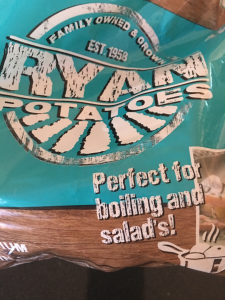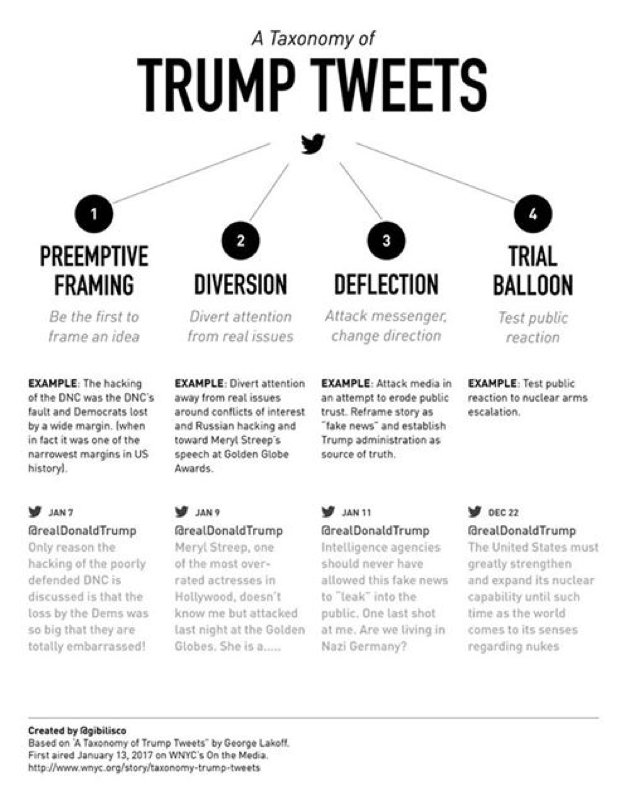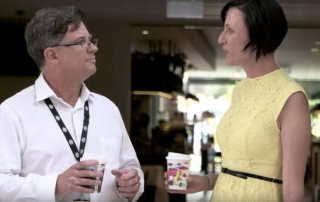How great copy beats competition and saves you money
Are you one of those people with a loosey-goosey relationship with grammar? Do you think we’ve reached an era where punctuation and spelling are not as important as they once were? You’re not alone. One Maine company is finding out the cost of a missing comma.
If you haven’t read the New York Times article about the $10 million judgment for a missing Oxford comma, I encourage you to do so. It’s a good example of where a lack of attention to grammar and punctuation had a major financial impact to a business. Usually the brand damage isn’t so easily quantifiable.
It’s not only commas causing problems. Time’s six-figure apostrophe error in the Wall Street Journal did nothing to instill confidence in their editorial expertise. And consider this bag of potatoes with an errant apostrophe. How much do you think those bags cost to produce?
Brand damage through careless errors
Consider the tweet sent by the US Department of Education which misspelled the name of writer, historian and civil rights activist W.E.B. Du Bois.
The follow-up apology tweet contained a grammatical error. Neither instilled confidence and Twitter lit up at the irony of the Education Department getting it wrong.
I wish these were isolated cases but they’re not. Spelling errors have become commonplace in business. Poor grammar is rife. It’s common to see marketing communication confusing the words complimentary and complementary, premiere and premier, and license and licence.
Spellchecker only does part of the job
Unfortunately, the age of content provides more opportunity for brands to get it wrong because we’re doing more writing than ever before. Consider the grammatical error in Donald Trump’s inauguration poster. Spellchecker can’t save you in this kind of situation where the word ‘to’ was used when ‘too’ was needed.
There are daily examples of social media updates with careless mistakes. That might be fine for your friends and family, but what impression does it leave for a brand, especially one whose business is words? Even if the accompanying article is perfect, the damage is done.
When this happens your company comes off looking careless. At worst, you look incompetent. Given the choice between a business with clean copy and one with mistakes in their writing, most people will go with quality.
Respecting your audience
But here’s another question for you. Have you ever considered good copy might actually be a competitive advantage? When fewer people have writing skills, and even fewer respect the need for good writing, you can easily set your brand apart by providing exemplary copy for your marketing and communications. If anything, it shows you respect your readers and take extra effort on their behalf.
Believe it or not, there’s a simple fix. Send everything you write to someone who finds your spelling, punctuation, grammar and word usage problems. A copyeditor, sometimes called a subeditor, is your best bet for quality assurance in your publishing. A good copyeditor is worth their weight in gold not only for what they add, but also for the brand damage they prevent.
If you’d like more information on using a copyediting service for your business, get in touch. It’s one part of effective writing this word nerd wouldn’t want to do without. Another good tactic for avoiding brand damage in your content marketing is to brush up your writing skills. I’m teaching a Writing Masterclass in Perth on 3 May 2017. You can register here.
Like what you’ve read? Sign up to the Lush newsletter for fortnightly advice to help you market your business better, tips from our video production gurus, and a podcast or two from our favourite podcasting team, Brand Newsroom. In the meantime, you might enjoy these:
Why blogging regularly still works for business
11 Tips to write better headlines and titles
The blogging blunders you need to know: Part 2
How to deal with writer’s block
Brand Newsroom 133: How to tweet like Donald Trump (and what to do instead)
Professor George Lakoff of Berkeley University says US President Donald Trump uses four main tactics to set the news agenda through his tweets. Here’s his analysis:
So can brands use similar tactics? Or would that be a formula for disaster? Today the Brand Newsroom team takes a look at what we can all learn from Trump’s Twitter.
Here are some key take-outs:
- Trump uses these tactics negatively and, while it has worked, more and more people are starting to see through it and his polls are slumping. It would not be a good way for brands to go to market.
- The repetition of message clearly works for Trump. Can you think of the New York Times without thinking of “the failing New York Times,” even though the paper isn’t failing?
- Some of Trump’s tactics amount to not taking responsibility for yourself and your actions, which is a bad tactic for brands. You’re breaking trust with the consumer.
- When it comes to a “trial balloon,” it’s a pretty common tactic for both politics and brands. Some people will view it cynically but it often works quite well.
On My Desk
- James’s recommendation was this article about the digital leadership gap.
- Nic recommended the Grizzly Labs app.
- And Sarah’s recommendation was Death to the Stock Photo.
Here are the links you might need
- George Lakoff’s website is here.
- And here’s that Ted Koppel versus Sean Hannity exchange Sarah mentioned.
- This is the disaster that was iSnack 2.0.
Have you heard the one about…
Recently Sarah and Nic were joined by Jamie Wilkinson of Cannings Purple to take a close look at the Cooper’s Brewery video PR disaster.
And here’s a discussion about the dos and don’ts of corporate video.
Like what you’ve heard?
Give us a follow on SoundCloud to get the latest episodes.
Or, you can subscribe or leave a review on iTunes.
Brand Newsroom 132: The brewery, the politicians, their bizarre video and the boycott
For the past two weeks Australians have watched a PR disaster unfold. A video called “Keeping it Light” (made for the Bible Society), featuring two conservative politicians drinking Cooper’s Beer and discussing same-sex marriage, sparked outrage in the community.
Jamie Wilkinson from Cannings Purple joins Nic and Sarah to break down what happened.
Here are some key take-outs:
- Cooper’s Brewery and the Bible Society probably both acted in good faith but they chose a topic that was a really binary and divisive debate.
- There wasn’t a well thought out strategy. There was intent to work together but no one seems to have thought it through to the end.
- The intent was to have two people talk sensibly about a divisive issue. The brand shouldn’t have been in the middle of it. There should have been more rigorous permissions/sign-offs. Cooper’s Brewery has suffered the consequences and it’s not even clear they knew about it.
- If you’re going to apologise, do it genuinely and do it well. By releasing an apology video that makes you look like you’re being held “hostage” you’re only going to do more brand damage. Get your media training in place and do it regularly, so you have the skills you need when a crisis situation arises.
- Cooper’s Brewery needs a six-month- to one-year-long crisis strategy to help rebuild its brand with the Australian community and to make clear what its values are and what beliefs and organisations it is aligned with.
Here are the links you might need
- Cooper’s Brewery has pulled down the main video but you can see some of it here, including the “hostage” apology video.
On your desk…
- Jamie’s recommendation was the Social Stars website.
- Nic’s was his Meet The Media event
- Sarah recommended producer Dan Hatch’s blog post about the importance of keeping your writers happy.
Have you heard the one about…
Recently the team talked about the dos and don’ts of corporate video.
They also had a really good discussion about how to deliver bad news well.
Like what you’ve heard?
Give us a follow on SoundCloud to get the latest episodes.
Or, you can subscribe or leave a review on iTunes.
Brand Newsroom 131: Dos and don’ts of corporate video
Lush Digital’s senior producer, Ian Bignell, joins James and Nic to dissect the Department of Finance’s “Game Changers” video — which has gone viral for all the wrong reasons. Where did they go wrong? And how do you ensure your corporate video delivers for you and doesn’t turn you into a laughing-stock?
Here are the links you might need:
- Watch the now famous “Game Changers” video, here.
- Here’s a blog post Ian wrote about where the video went wrong.
- And here’s that blog post James mentioned which suggests “not trying to be cooler than you are”.
Here are some key take-outs:
- Don’t try to get real people to act. Get them to tell their story naturally, by interviewing them, instead.
- If there’s any moment in your video that people aren’t going to find believable, the audience is going to turn off.
- If you’re in the process of making a video and it doesn’t feel “right”, stop and start again with a new creative idea.
- Don’t cram your script with obvious key messages.
- The client wants the best product they can get for their budget, but the video production company needs to be honest about what is likely to work.
- Clients should always ask any video production company (or marketing/advertising agency) for examples of their work before engaging them.
- Brief your video production partner about what you want to achieve.
On My Desk
- Nic’s recommendation was Intelligent Editing’s PerfectIt software.
- Ian’s recommendation was Vimeo’s Staff Picks.
- And James foreshadowed next week’s discussion about the bizarre PR disaster that one Australian brewery found itself in.
Have you heard the one about…
Recently the Brand Newsroom team looked at how to break bad news well.
And here’s a discussion about how to SnapChat for business.
Like what you’ve heard?
Give us a follow on SoundCloud to get the latest episodes.
Or, you can subscribe or leave a review on iTunes.
Brand Newsroom 130: How to communicate bad news well
What’s best practice when it comes to sharing bad or difficult news? What are the strategies to employ? Is honesty always the best policy? What do you do if you’re caught unawares by circumstance?
Here are some key take-outs:
- People try to avoid making bad news public in case it does damage, but bad news will almost always find its way out into the public and then it’s likely to do even more damage.
- Putting out bad news is “in the greater good” long term. Don’t dally. Put some thought into it, get the news out and get it out in writing.
“Be open, honest and transparent with everything because everything will eventually come out.” — Nic
- Focus on how you’re delivering the message and make sure you’re getting it right for each audience — for example, employees, versus shareholders, versus customers. Don’t forget a group.
- Try to minimise the impact your bad news will have, if you can. Don’t add more fuel to the fire.
“The truth comes out and I’d rather control it.” — James
- Here are Forbes’ 10 Commandments for delivering bad news: Never surprise, delay, or hide the facts. Always explain in writing; justify; look for the silver lining; bring solutions to the table. Always remember you have multiple audiences. Follow up and follow through. Treat people with dignity.
- The public’s memory is very short. You might take a short-term hit but you will recover.
“Brands try to soften the blow. I’m a ‘rip the Band-Aid off’ kind of girl. You need to get that information out right away.” — Sarah
Here are the links you might need
- Here’s that Black Dog Ride resignation email Sarah was talking about.
- And here’s that Forbes 10 Commandments article.
On My Desk
- Sarah recommended these two books: The International Thesaurus of Quotations and Bartlett’s Familiar Quotations.
- Nic recommended this website for forward planning.
- And James recommended this New York Times advertisement about truth.
Have you heard the one about…
Recently James, Sarah and Nic spoke to Snapchat superstar, Chocolate Johnny.
And here’s a discussion with Trevor Young about publishing on third-party platforms.
Like what you’ve heard?
Give us a follow on SoundCloud to get the latest episodes.
Or, you can subscribe or leave a review on iTunes.
Become a better brand writer with this top tip
Writing is one of those tasks a lot of people hate to do. They sit there staring at the blank page, unable to start, knowing what they want to say but unable to put it in words, finding ways to distract themselves, and getting themselves into a muddle.
If that’s you, I have a neat trick to help you get started more confidently. It’s something I learnt during a career in journalism, where procrastinating over a blank page simply isn’t an option.
Let’s get started.
Founding facts are your friend
Your first port of call is to consider the “who, what, when, where and why” of what you need to say. Explain it like you’d explain it to someone if you had ten seconds with them in an elevator before the doors closed on you. Write it down. It doesn’t have to be pretty, just get all the important information down in one sentence.
So it could look like this:
Judy’s Garden Centre is celebrating our twentieth anniversary this weekend by offering every customer their choice of either a bag of mulch or a punnet of petunias as a free gift.
It’s a little ugly but, as a starting point, it does the job.
Further facts must flow
In journalism, these “who, what, when, where and why” facts often make up the opening sentence of any article. We follow a structure called “the inverted pyramid” — where the most important facts are put at the top and every sentence that comes underneath it is progressively less and less important.
The inverted pyramid does a couple of things: Firstly, it ensures the reader gets the necessary information as early as possible, so they can decide whether they need to keep reading. Secondly (which is less important for our purposes but is still excellent trivia) it means that when the articles are being put on the pages the editors can “cut from the bottom” knowing the most important information will not be lost.
So, let your next most important facts flow — but still stick to just the facts.
Let the fluff flow, too
Writing this way cuts out all the “fluff”. You don’t have to worry about whether you’re being “attention grabbing” or artistic — you can just say what you need to say.
But, once you’ve written four or five paragraphs down you might well feel like your writing muscles have warmed up. Continue getting down everything you need to say. Don’t stop.
Once you get to the end (with no more important facts to share and you’re in the swing of writing) you are far more likely to feel inspired to go back up to the top and write a more flowery introduction. This is the perfect point to do this because your brain is finally in the right place to do a good job of it.
So you could go back later and change your opening to:
It’s our twentieth birthday and we’re celebrating by giving you the presents!
This weekend every Judy’s Garden Centre customer will head home with either a free bag of mulch or a punnet of petunias. It’s our way of saying ‘thank you’ for the support you’ve given us over all these years.
That’s far more enticing to the reader — more warm and welcoming, but still communicating the important message.
45 minutes, fresh eyes, and a friend
Once you have your article written and you’re basically happy with it, walk away from it for 45 minutes. Go do something else — mulch your petunias perhaps. Then come back to it with “fresh eyes” and see if you’re still happy with it. Sometimes just getting away from something you’ve been concentrating on for a while is the best way to come up with a better way to write it.
Finally, when you’re happy with it, it’s time for a little proofreading. Get someone else to have a look over it. Ask them what improvements could be made. Did you get the tone right? Is there anything that doesn’t make sense? Does something need further explanation? It’s often best to ask someone who knows nothing about the topic you’re writing about.
Then, before you hit “publish”, get a third person to look at it, too: Someone who can proofread it and pick up spelling mistakes and grammatical errors.
It’s not a foolproof system, but it has been a very useful tool for me over nearly 20 years (almost as long as fictional Judy’s been in fictional business). It’s a really simple way to stop that page looking so blank and getting the words to flow.
If you’d like to work with a content marketing team that understands how to write copy your clients will love, get in touch with Lush Digital Media. We might even throw in some petunias.
Like what you’ve read? Sign up to the Lush newsletter for fortnightly advice to help you market your business better, tips from our video production gurus, and a podcast or two from our favourite podcasting team, Brand Newsroom. In the meantime, you might enjoy these:
Brand Newsroom: How to generate editorial ideas like a journalist








